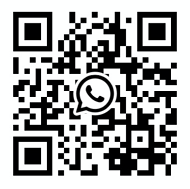What is the difference between tapered roller bearings and ball bearings?
Release time:
2023-09-21 08:38
Source:
Like all roller bearings, tapered roller bearings have linear contact, while ball bearings have point contact. Line contact has higher load-bearing capacity, while ball bearings have higher speed capacity.
Tapered roller bearings consist of outer and inner rings, while ball bearings consist of outer and inner rings. Tapered rollers can be assembled into a box, but the simplest form is two independent components, while ball bearings can be separable, usually as a separate unit.
The tapered roller bearing adopts a straight tapered roller, and its end face contacts the guide flange on the inner ring. The taper of the roller and the path of the inner ring roller share a common vertex on the bearing axis. The outer ring in the design has a slightly curved roller trajectory generatrix to prevent edge loading of the rollers. Although the degree of closeness between the roller and the outer ring decreases, the strain of the outer ring is smaller than that of the inner ring. The guide flange of the inner ring has a spherical surface, and the spherical end face of the roller is pressed against the spherical surface. Like spherical bearings, the pressure on the flange effectively guides the rollers. Some manufacturers such as Timken, FAG, NTN, and SKF make the roller end face flat and the flange guide surface conical.
Due to the fact that tapered roller bearings are separable, they are usually installed relative to each other so that one bearing can adjust to each other. After adjustment, there will always be a very small gap left in the bearing. The temperature change in the shaft will affect this adjustment, which will also affect the bearing clearance. Therefore, single row tapered roller bearings are usually only used when the spacing is short. Tapered roller bearings have high radial load-bearing capacity and axial load-bearing capacity in one direction. The thrust capacity depends on the angle of the roller. As a measure of this angle (contact angle), it is usually 12 to 16 degrees. Some heavy-duty tapered roller bearings have a contact angle of 28-30 degrees.
In many applications, tapered roller bearings are used in pairs back to back to evenly withstand axial forces in any direction. Tapered roller bearings are widely used in automotive wheel bearings that withstand radial and axial loads. Tapered roller bearings are typically used in heavy-duty applications. Many different industries, including agriculture, construction, and mining equipment, axle systems, gearboxes, engine motors and gear reducers, transmission shafts, railway axle boxes, differentials, wind turbines, and all types of trailers.
Related News
1、Improve the quality of lubrication, control the pressure, temperature and flow of oil, and strengthen the oil filtration. 2, the use of fuel and lubricating oil in accordance with the regulations.
The causes of rolling bearing heat and its elimination methods
Bearing precision is low: choose the specified precision grade bearing. Spindle bending or box hole is not centered: repair the spindle or box.
Dismantling of bearings is carried out for regular maintenance and bearing replacement. After disassembly, if the bearings continue to be used, or if it is necessary to check the status of the bearings, the disassembly should be carried out with the same care as when they are installed.
In general, regular manufacturers of brands have their own specialized designers to design the packaging, and production conditions to arrange for the production of factories to produce production, therefore, the packaging of the product from the line to the color block should be very clear, unambiguous.
Working principle of ball bearings
Ball bearings operate based on the principle of rolling contact, which is different from the sliding contact encountered in sliding bearings. The working principle involves the following concepts:
The external dimension is the determining factor for selecting rolling bearings (whether they are ball or roller type).By standardizing the design of installable roller and ball bearings, designers must determine the required size based on the required envelope size.







